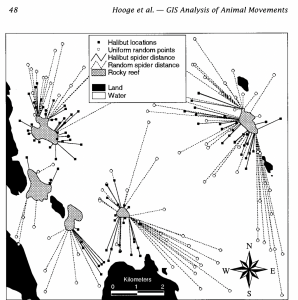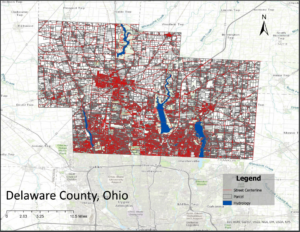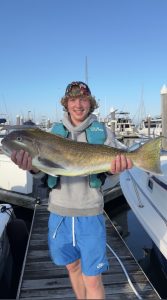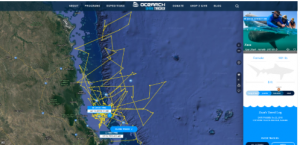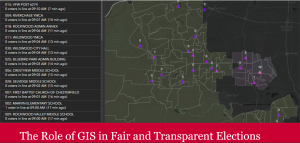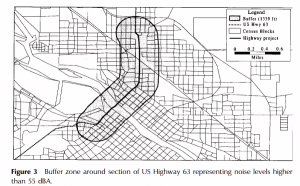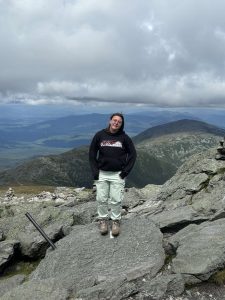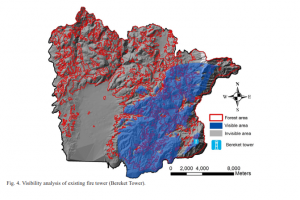This week, I read chapters 1-3 of the Esri Guide to GIS Analysis by Andy Mitchell. Here are some of the key takeaways from each chapter:
Chapter 1-
-GIS analysis looks at geographic patterns and relationships between features.
-Start analysis by deciding what information you need. How will the analysis be used and by who?
-The type of data and features present determines what method of analysis you use. You may need to create more data depending on what information you already possess.
-By looking at the results of your analysis, you may decide that you need different parameters than the ones you started with because the information they provide may or may not be useful.
-Discrete features- “For discrete locations and lines, the actual location can be pinpointed. At any given spot, the feature is either present or not.”
-Continuous phenomena- like precipitation or temperature. Can be measured anywhere. They happen across the entire area being observed.
-Features summarized by area- “represents the counts or density of individual features within area boundaries.” Examples include the number of businesses in each zip code, the total length of streams in each watershed, or the number of households in each county (obtained by summing the number of households in each census tract). The data applies to an area, but with no specific location.
-Geographic features can be represented by either vectors or rasters. A row in a table with x and y locations demonstrates a vector, while a raster is represented by a matrix of cells in a continuous space.
-Discrete features and features summarized by area are typically represented using vectors and continuous phenomena are usually represented by both, and continuous numeric values by raster.
-Types of attribute values- categories, ranks, counts, amounts, ratios.
-Categories are types of similar things like roads or crimes. Not continuous
-Ranks put features in order, like when direct measures are hard to quantify (when several things factor in), such as scenic value. Not continuous
-Counts and amounts show total numbers. A count shows the actual number of features and amount can be any measurable quantity within the represented feature. For example, a count would be the number of businesses and the amount would be the number of employees each business has. continuous
-Ratios show the relationship between two quantities, such as the average number of people per household. Continuous
-When working with data tables, you are commonly summarizing values of attributes, calculating attribute values, and selecting features.
Chapter 2-
-Preparing data- make sure that coordinates have been given to each feature you are mapping and make sure that you have a category attribute with a value for each feature as well.
-If you have data that is already in the GIS database, then you do not need to assign coordinates because they are already given to you. However, if you have brought in data from another program or if you are entering it by hand, then you need to assign geographic coordinates by filling in information such as a street address, or latitude–longitude values, which will allow the system to assign geographic coordinates.
-You may need to add information (code) to each feature that identifies its type.
-In order to add a category, a new attribute must be created in the layer’s data table. Then, you have to assign values to each feature.
-“In some cases, a single code indicates both the major type and subtype. For example, all crimes with a value between 500 and 599 are burglaries, but the type of burglary is indicated by the specific value.”
-Mapping a single type- draw all features as the same symbol.
-Using a subset of features- Book uses the example of mapping all crimes, as well as specifically all burglaries, or only commercial burglaries.
-Mapping by category- draw features using different symbols. The book gives an example of mapping all major roads by road type.
-Displaying features by type- Book uses the example of mapping burglaries by the type of building entered (residential or commercial) or by the type of entry (forced or non-forced).
-Do not display more than 7 categories. Most people can distinguish up to seven colors or patterns on a map. Displaying any more than 7 makes a map harder to read and patterns harder to find.
-Grouping categories- If you have more than 7 categories, group them.
-When using symbols, colors are easier to distinguish than shapes.
-Mapping reference features also make a map easier to understand and read.
-Zooming out may help you distinguish patterns.
Chapter 3-
-Mapping patterns of features with similar values shows where the most and least are. This is important for finding places that are in critical need of action.
-Continuous phenomena are typically mapped as shaded areas to show quantity.
-A count is the actual number of features on the map.
-An amount is the total of a value associated with each feature.
-Using counts and amounts when summarizing areas can mess up patterns that you’re trying to discover.
-Ratios show the relationship between quantities. They are created by dividing one quantity over another. (most common are densities, proportions, and averages).
-Ranks put features in order (high to low). They give relative values instead of precise ones.
-Grouping values into classes helps audiences to compare features quickly.
-To create classes, you can do so manually or by using a standard classification scheme. These methods assign the same symbol to different features to group them.
-A class break is where there is a jump in values (between bars).
-Understand quantiles, standard deviation, and natural breaks, and equal intervals.
-Using natural breaks can isolate outliers and avoid skewing your patterns.
-GIS gives these methods for creating maps to show quantities: Graduated symbols, graduated colors, charts, contours, and 3D perspective views.
-Discrete locations or lines, use- Graduated colors or symbols to show value ranges, charts to show both categories and quantities, and a 3D view to show relative magnitude.
-Discrete areas or data summarized by area, use: Graduated colors or symbols to show value ranges, charts to show both categories and quantities, and a 3D view to show relative magnitude.
-Spatially continuous phenomenon, use: Graduated colors to show value ranges, contours to show the rate of change, and a 3D view to show relative magnitude.



